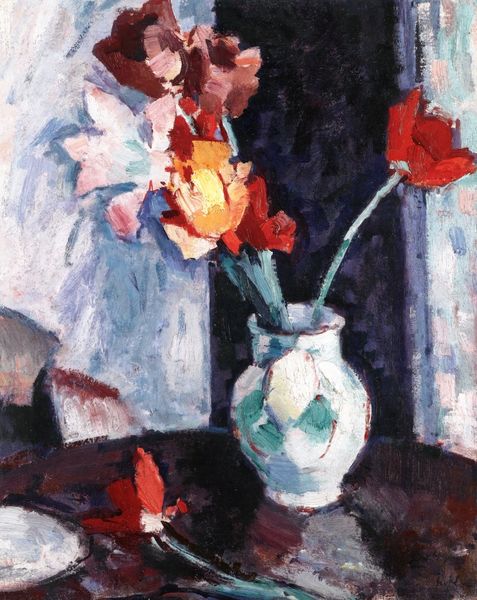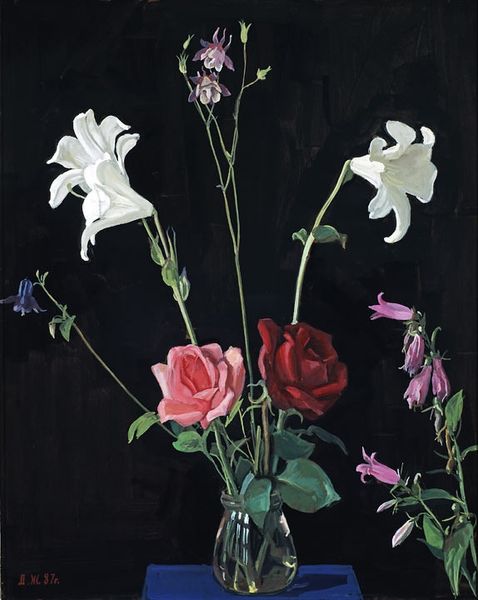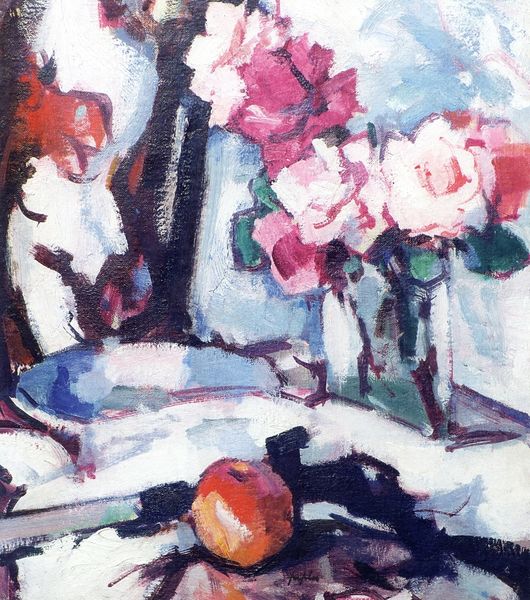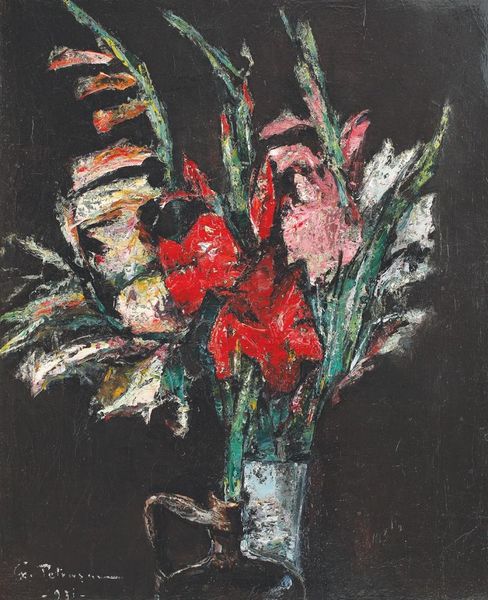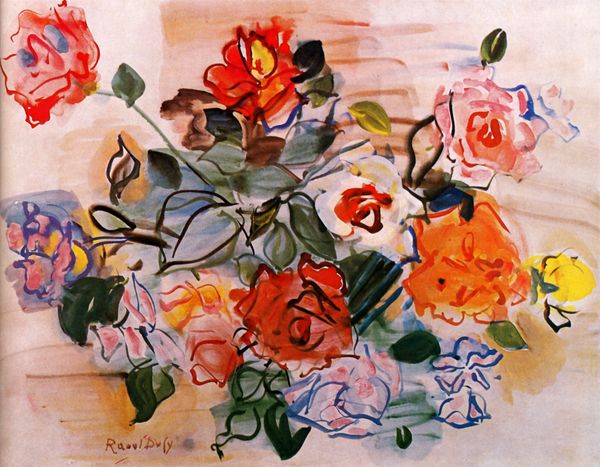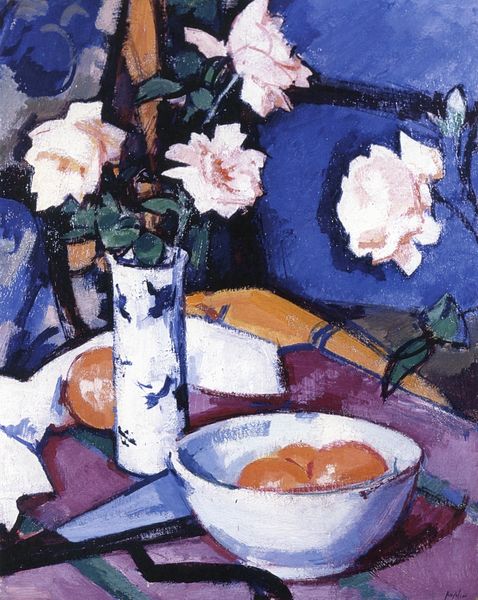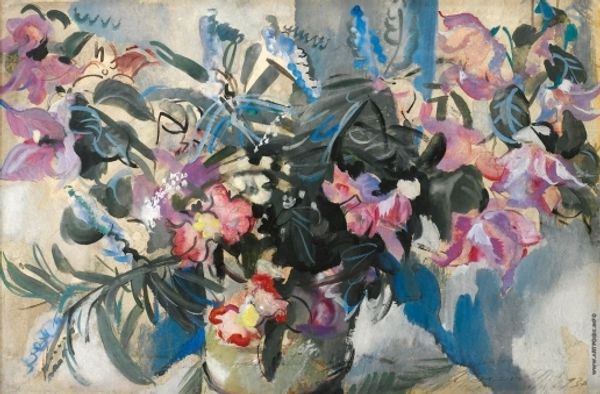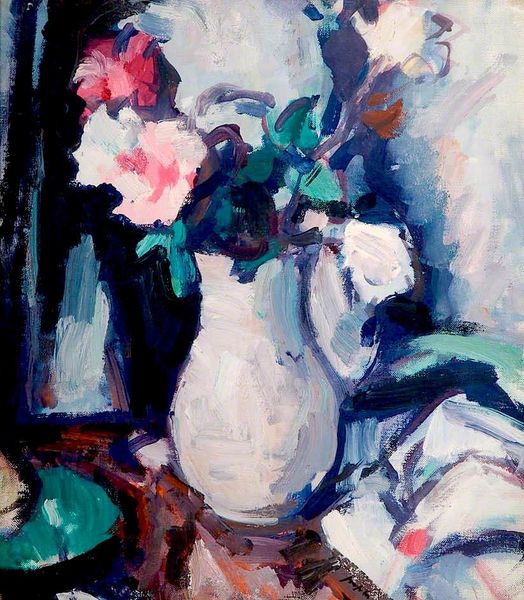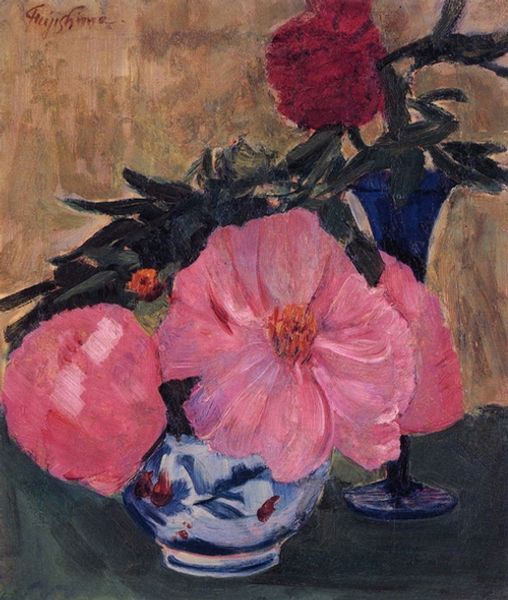
Copyright: Public domain
Curator: Look at this, an oil on canvas still life by Samuel Peploe, dating from 1923, titled "Pink Roses in a Japanese Vase". Editor: Hmm, initially, I find myself quite captivated by the interplay of textures—the almost velvet quality of the roses against the smooth coolness implied by the vase. There’s something profoundly delicate yet grounded in its presentation. Curator: Absolutely. Peploe was part of the Scottish Colourists, and here we see that preoccupation with paint handling and direct engagement with objects as form and material. The visible impasto tells us about his process. Editor: Indeed, that raw immediacy breathes so much life into the painting. But do you sense the odd loneliness, though? Those roses, for all their vivacity, appear almost stranded against that cool background and austere surrounding books. Is this a statement of alienation despite beauty, perhaps? Curator: It could very well be a response to, or reflection on, the increased commodification and global movement of goods evident in the 1920s. Peploe engages with a Japanese vase—an imported item signifying particular trade relationships at that time. Editor: You know, considering its rather unassuming name, this work does provoke such contemplation of bigger human dramas playing out quietly in the still life. The way he contrasted the imported vase with ordinary objects and blooms—quite profound! Curator: The materiality then becomes almost symbolic: consumption, beauty, even transience become tied together within his style, a type of post-impressionism, yet intensely material and relevant. Editor: And those colours! That arresting cobalt tablecloth paired with the pale rose tints... He's weaving together feelings with shades and shapes in such a masterly way. Thank you, Mr. Peploe. Curator: Agreed; it’s a potent combination to analyze. A good consideration of materiality and what it suggests of the era.
Comments
No comments
Be the first to comment and join the conversation on the ultimate creative platform.


